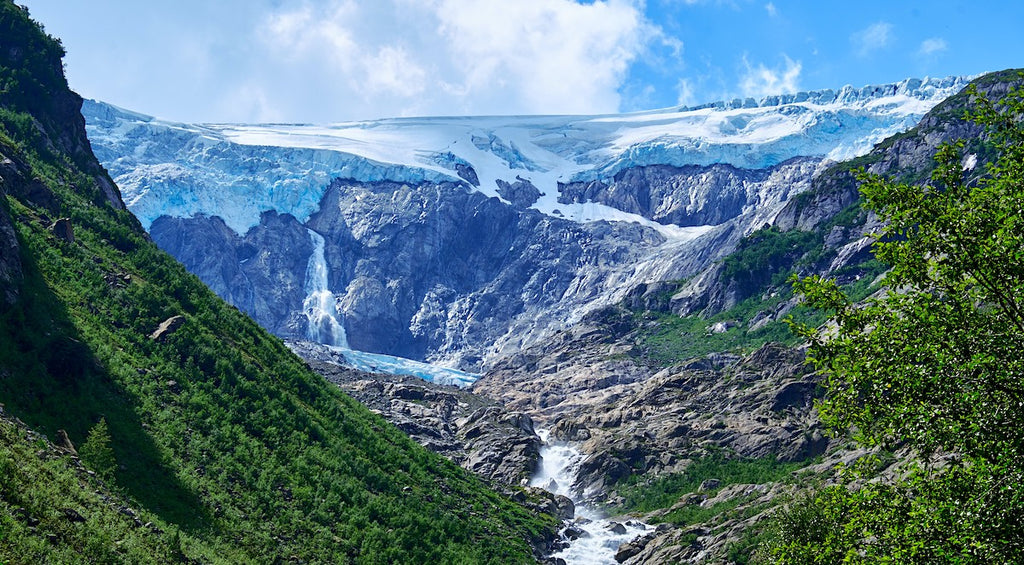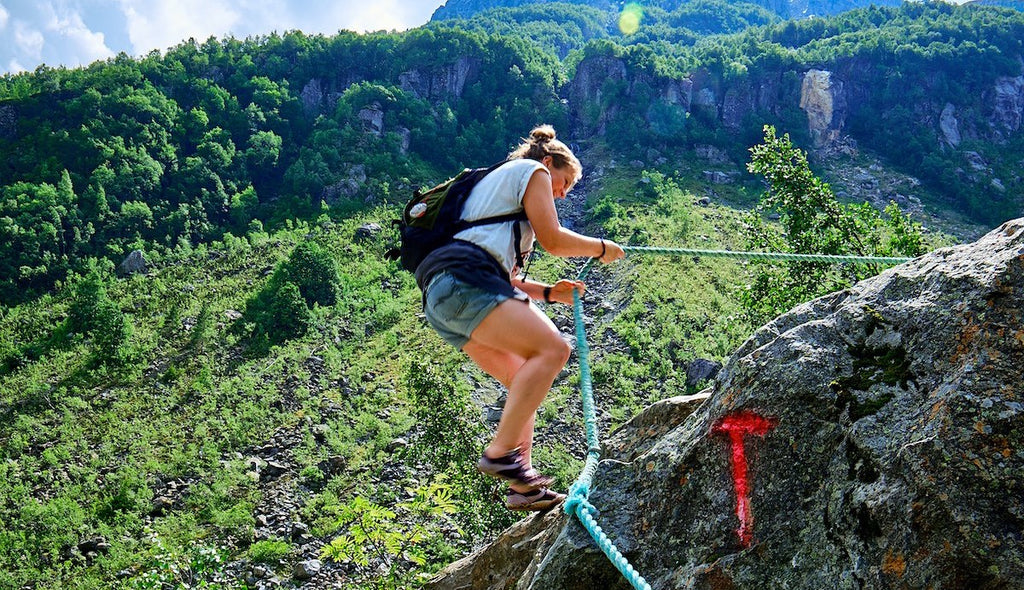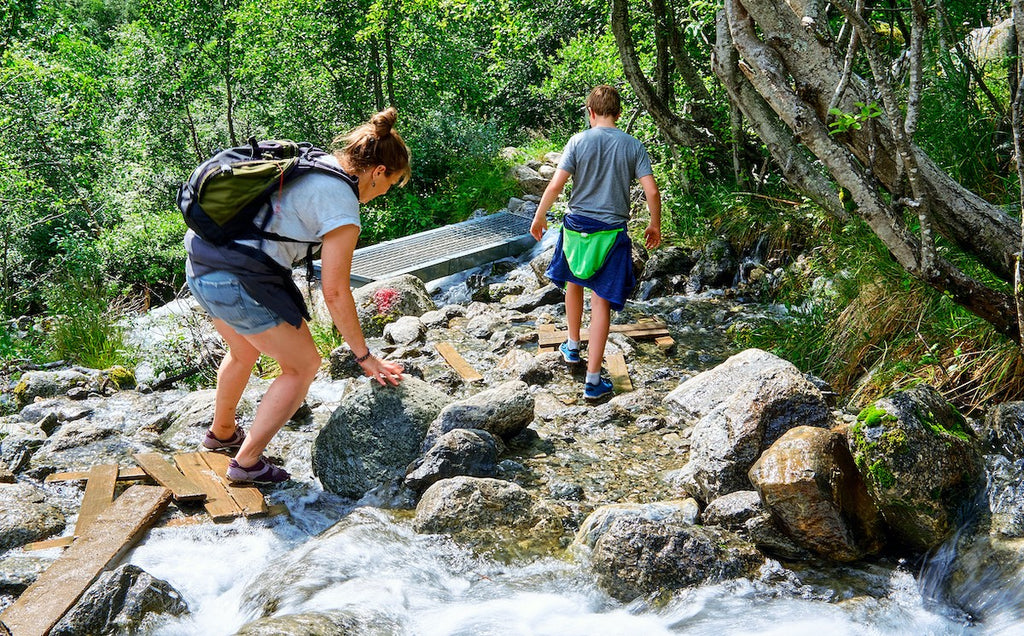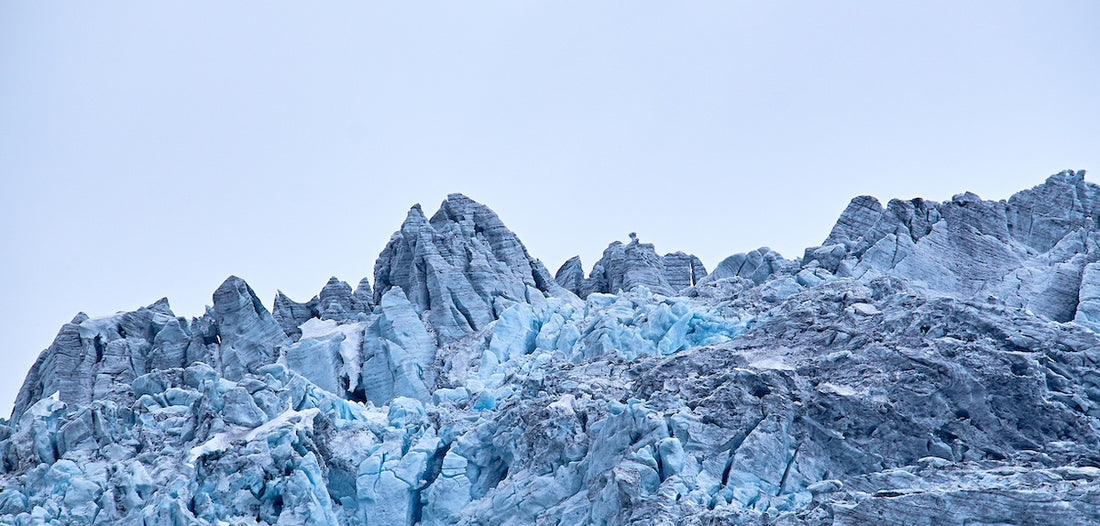Elsker du naturoplevelser ud over det sædvanlige, og kan du leve med, at en vandretur på visse steder kræver, at du kravler op af klippesider, og andre steder, hiver dig op i reb? Så skulle du tage en “vandretur” op til gletscheren Folgefonna. Du kommer helt tæt på de store smukke ismasser, hvor du kan fornemme de enorme kræfter naturen ind imellem indeholder. Norge leverer her frisk luft, god motion og bjertagende natur.
Lad det være sagt med det samme, du skal være i forholdsvis god form for, at tage turen. Så vidt jeg husker, kalder nordmændene selv turen for en moderat hikingtur, men for os danskere, der kommer fra flade skovstier, er turen mere end blot en travetur. Ikke at du skal holde dig tilbage, men der er altså et par passager, der kræver lidt kræfter, at forcere. Så når du efter nogen timer kommer tilbage til foden af fjeldet, med våde fødder og ømme lår, så er du klar til en lille puster.
Det er meget populært at lave lister som eksempelvis "5 ting du skal se i Norge". Om det her er blandt de 5 vigtigste seværdigheder, er svært at sige, men for os var det en stor oplevelse. Det er jo ikke hver dag man står lige ved siden af et naturfænomen, som man måske godt kan kalde en gletscher. Man bliver måske ikke starstruck, som man bliver når man står på kanten af Prædikestolen, og kigger ned. Men at se den komprimerede blå is tårne sig op på toppen af gletscheren, er for os, som fotografer og naturelskere, en kæmpe oplevelse.

Kig til toppen af Folgefonna gletscheren
Hvor ligger Folgefonna Gletscheren?
Gletscheren, eller isbre, som den kaldes på norsk, er Norges 3. største, og ligger i Nationalparken Folgefonna, der ligger i Vestland. Området ligger i god afstand fra Danmark, til en kort ferietur. Vi har en køretur på ca. 12 timer fra Birkerød, og op gennem Sverige.
Man kan komme op til Folgefonna fra flere steder. På den officielle side “Visit Norway” er der beskrevet 3 muligheder. Rullestad, Bergstø eller Mosnes. Vi kom til den fra et 4. sted nemlig Buer. Hvis du kører mod Odda, der ligger mellem Hardangerfjorden og Sandvevatnet, kører du mod Buer, og følger skiltene mod “Buarbreen”, “Glacier” eller Gletscher - kært barn har mange navne, og de bruger sjovt nok dem alle sammen, i deres skiltning.
Du følger herefter vejen i ca. 8 km. til du kommer til en lille parkeringsplads, hvor du stiller bilen, og tager resten af vejen til fods. Man kan også komme ind til gletscheren fra den modsatte side, gennem Bondhusdalen. Jeg ved ærligt talt ikke om du kan vandrer op til toppen fra den side, men der er en forholdsvis lang vandretur, gennem dalen, før du kommer til foden af fjeldet. Så hvis du vil gøre det lidt let for dig selv, så kør til Bure, og stil bilen.

Starten på turen, langs floden med smeltevand
Hvor hård er vandre turen til Folgefonna gletscheren?
Som skrevet i indledningen, beskriver nordmændene det som en moderat tur, men vi har efterhånden været på en del fjelde i Norge, og som dansker vil jeg betragte det som en temmelig hård tur, med en del strabadser under vejs. I Danmark er vi jo ikke så vant til, at skulle kravle op af klippesider, når vi er ude på vores søndagsture, og det skal man altså her.
Som sædvanligt starter turen stille og fredeligt, med en god flad sti, og som sædvanligt er vi afsted i det tøj vi nu går og står i, og som sædvanligt har jeg et springerknæ, der driller. Det vil sige korte bukser og flade sko. Under dressed som sædvanligt - men det er vi ved at være vante til. Nordmændene selv kommer ofte i fuld hikinguniorm, men de er jo også afsted hver weekend. Du behøver altså ikke at investere i dyrt grej for, at nå til toppen, du bliver måske bare lidt træt i futterne, inden du er nede igen.
Du kan sagtens klare turen uden at medbringe meget proviant. Vi havde et par flasker vand og en del kameraudstyr. Af samme grund fotograferer vi med Fujis systemkameraer, da de tager outstanding billeder, og vejer utroligt lidt. Jeg har tidligere vandret hårde ture op af, med Canon spejlrefleks og en række linser på ryggen. Det kan i sig selv være hårdt.
Du skal altså være klar til, at gi’ den gas i et par timer. Du skal ikke have noget imod at stikke skoene i vand, og du skal ikke medbringe klapvogne eller lignende. Det kan også være en hård tur for små børn, mens det for større børn er en fantastisk oplevelse. Vi havde vores søn på 14 med op til Folgefonna, og han nød bare at løbe i forvejen.
Lidt mere om selve turen op til toppen
Turen op følger en officiel rute, og det kan være smart at benytte den, da der her er monteret tovværk, du kan trække dig op af klipperne med, og bygget små broer over vandet, når det er nødvendigt. Man starter ud med at gå langs den flod, hvor alt smeltevandet fra gletscheren løber ned i søen Sandvevatnet. Langs bredden står der hundredevis af små stentårne, som folk har bygget ved, at stable små sten oven på hinanden. Det ser ret flot ud, og faktisk er en af vores bedst sælgende plakater, netop et lille stentårn, fotograferet her på bredden.
Det flade landskab stopper naturligvis ret hurtigt, hvorefter terrænet bliver stejlere og stejlere. Først bare sådan lidt stejlere, men efterhånden så kan man altså godt mærke at stigningsprocenten ryger i vejret, og at blodet pumper lidt hårdere, når de stejle klipper skal forceres. I modsætning til mange af de andre ture vi har været på, så bliver du ikke presset ud til lodrette fjeldsider, du vandrer og klatrer i et meget trygge omgivelser. Det er altså kun fysikken du udfordres på - ikke psyken.
Bortset fra lige i starten, så er turen en blanding af lidt fladere jord- og grusstykker, områder med vand (det var i 2015, hvor det regnede konstant) og stejle passager med glat granit eller høje “granittrapper”. Det er egentligt bare at at holde energien oppe, for lige pludseligt er du på toppen. Vi brugte omkring 1,5 time til toppen, men vi stopper også altid mange gange undervejs for at fotografere.

Agnete trækker sig op af de stejle klippesider

Man kan nemt få en "sok" på vejen
Tæt på toppen af Folgefonna
Når du når til toppen, er det altså ikke toppen af gletscheren du står på. Det er et klippe plateau, der ligger under gletscheren, hvorfra du kan nyde gletscheren helt tæt på. Når jeg skriver tæt på, så er der en bred flod med smeltevand, imellem plateauet og gletscheren, der gør, at du ikke kan komme helt hen og røre ved isen. Om floden ind imellem kan forceres, ved jeg ikke, men for os var det en kæmpe oplevelse blot at stå så tæt på de store ismasser. Ud over at der stråler en kulde ud fra de store ismasser, så kan man simpelthen mærke og se de kræfter, den store kappe af “vandrende” is indeholder.
Du kan se op til den smukke isblå top, hvor den komprimerede is tårner sig op, som var den lavet af det hårdeste granitstykker, der læner sig op mod hinanden. Længere nede mod bunden af gletscheren, bliver det flotte blå “klippe til klippe tæppe”, afløst af et kaos af sten og grus, der skubbes foran, rundt om og oven på isen. Alt sammen er med til at give følelsen af, hvor små vi mennesker er. En fantastisk oplevelse.
Vi havde hørt at vi ville græde første gang vi så en hval, men det gjorde vi ikke. Vi græd heller ikke da vi var tæt på Folgefonnas blå ismasser, men der er ikke tvivl om, at oplevelsen står meget højt i hukommelsen. Om en gletscher er noget man skal se en gang i livet, er jeg heller ikke klar over, jeg kan bare sige, at det er en naturoplevelse langt ud over det sædvanlige. Vi kan anbefale turen til alle, der hungrer efter flotte og lidt usædvanlige naturoplevelser, og som det er med den slags oplevelser, så skal du ikke dele toppen med hundredevis af andre turister.

Isen og klipperne på Folgefonna danner de flotteste motiver

Der er lidt kaos, hvor isen skubber grus, småsten og klippestykker foran sig

Nedstigning i regnvejr er en glat omgang - så træd forsigtigt, og husk regntøj
PS: Turen ned foregik i pis' øs regnvejr, hvilket dels gjorde turen meget langsom ned over de våde klippesider, og dels meget våd. Husk regntøj, hvis der er optræk til regnvejr, som kan komme meget pludseligt i fjeldene.
Hvis du er interesseret i at tage en guided vandretur oven på gletscheren, så er det også muligt. Søg på Google for, at finde ud af hvordan.
Har du mod på flere historier fra Norge?
- Turen til Prædikestolen er både flot og hårrejsende
- Læs her om det er værd at besøge Gamle Stavanger
- Vi har tabt vores hjerter til den norske natur





